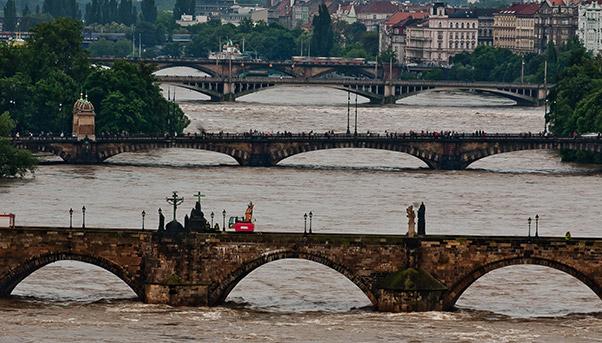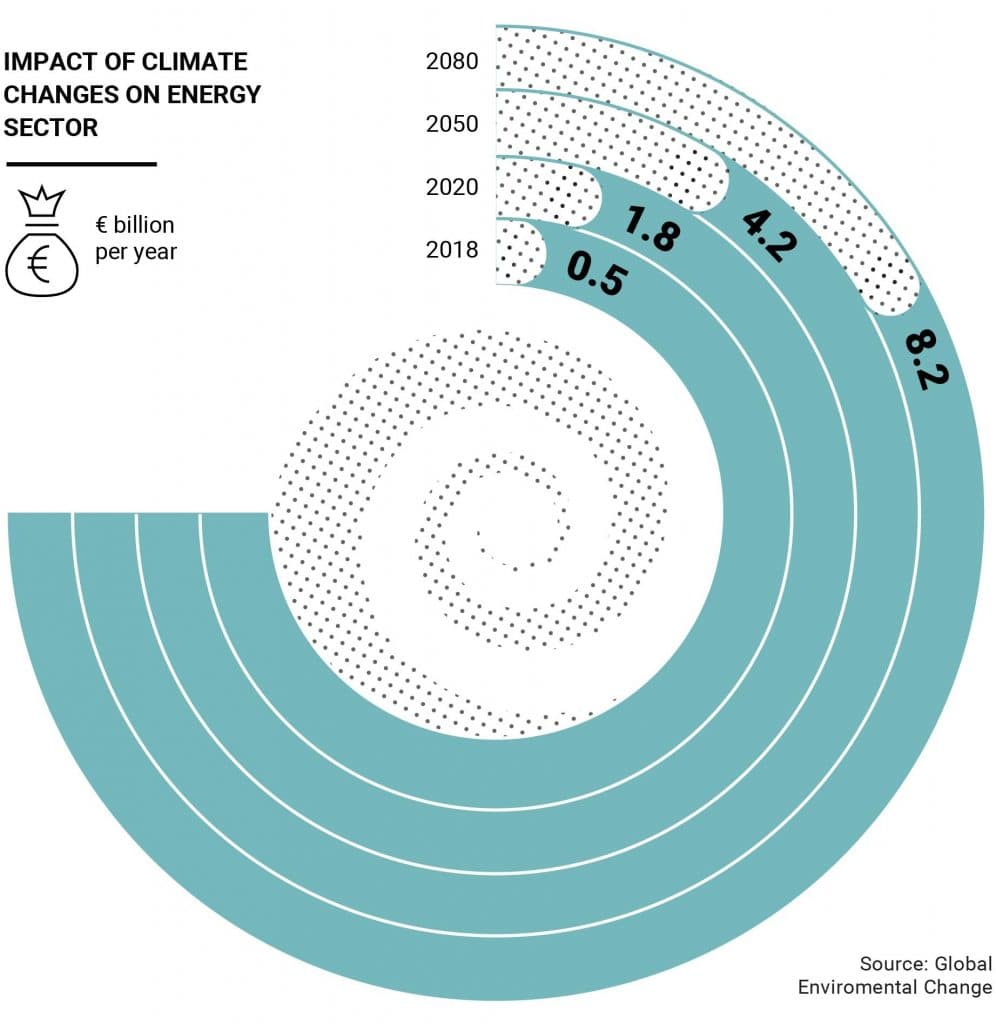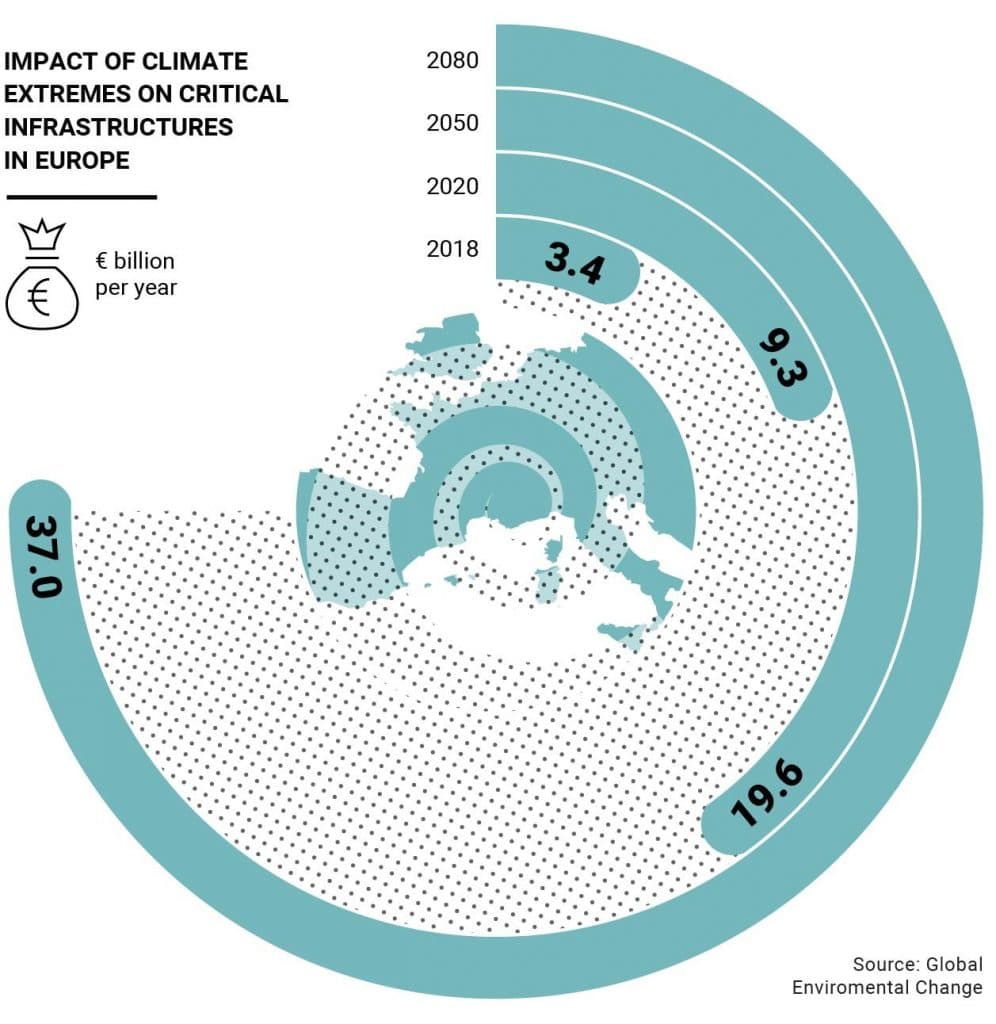
Rising temperatures, floods, wind storms, cold snaps: Europe is certainly not immune to the effects of climate change, as the events of recent months have shown. Dry spells followed by violent thunderstorms and sudden drops in temperature could become a constant feature of daily life on the continent. The impact, however, goes beyond people’s lives and extends to the region’s infrastructure, which experts think could be seriously damaged by these sudden and sharp changes.
The impact of weather events on strategic infrastructure will be significant. European countries spend 3.4 billion euros annually on damage due to climate change. But that amount is set to rise sharply, to about €9.3 billion by the 2020, €19.6 billion by 2050 and €37 billion euros by 2080.
These forecasts are contained in the study “Escalating Impacts of Climate Extremes on Critical Infrastructures in Europe” in the January issue of the journal “Global Environmental Change” by Elsevier, the world’s leading medical and scientific publisher. Carried out by a team of scientists from around the world using data analysed by 2,000 experts, the study provides a picture of the future of large infrastructure and what local governments must do to guarantee citizens have access to a modern and efficient infrastructure system.
The Sectors Most at Risk
Energy and transport are the two sectors that risk the most damage from climate change, and therefore need the most investment in terms of supporting infrastructure. Annual spending in Europe to fix climate change-related damage to energy infrastructure is €500 million. But this figure is set to grow exponentially, by 400% in by 2020, by 860% by 2050 and by 1,600% by 2080. In particular, hot spells and drought will have a high impact on energy plants, which are obliged to maintain a steady interior temperature.
Transportation faces a similar risk. The increase in temperature will have a significant impact on street, highway and railway conditions, ruining asphalt and rails, while water transport will suffer a devastating impact from drought. Europe’s transport infrastructure needs annual climate change-related fixing of about €800 million each year, which will grow by 1,500% by the end of the century.

How the Impact of Weather is Changing
Until now, Europe’s infrastructure had two main enemies in terms of weather: flooding and high winds. But a lot has changed in recent years, and Europe is now being affected by weather phenomena that had never been a big threat in the past. In particular, heat waves have become more frequent and are devastating the continent with a violence previously unknown. If up until 2010 weather only caused 10% of infrastructure damage, it is destined to reach 90% by the end of the century, the study said. This confirms that high temperatures and their impact is one of the greatest dangers to Europe’s infrastructure. The countries of southern Europe, like Italy, Spain and Greece but also France, face the greatest risks from temperature increases. Meanwhile, northern and eastern Europe (the United Kingdom, Poland, the Czech Republic, Bulgaria and Romania) will have to deal with increased risks of heavy rains and flooding.

The European Investment Bank Sounds the Alarm
The “Global Environmental Change” study sounds an alarm about future risks to Europe’s infrastructure, urging immediate action. In a sense, it echoes that made by the European Investment Bank (EIB), which warned member states of the European Union in its report in 2017 about the risk of low infrastructure spending. The EIB pointed out that investments have increased, but are still insufficient compared with the EU’s infrastructure needs.
«We see a recovery, we see strengthening investment. But that is exactly the moment where you have to look at the long-term challenges», said Debora Revoltella, chief economist at the EIB. «Much more needs to be done to put the issue of infrastructure spending into the political narrative, to explain that it’s for the good of the long-term health of the economy».
EU governments invest only 2.7% of GDP on infrastructure, according to the EIB, the lowest amount in the past 20 years. It is too small an amount in light of the dangers that climate change, even in the near term, may hold in store for the continent.

